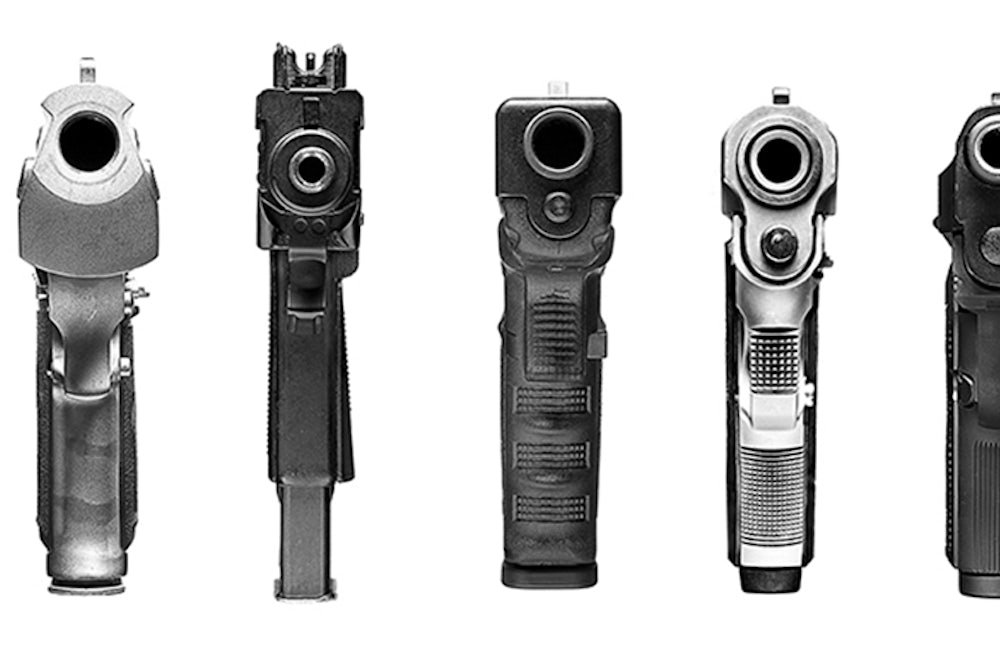
The brainchild of Canada-based photographer Peter Andrew and Creative Directors Simon Duffy and Derek Blais, The Point Blank project shoots handguns in close-up, portrait-style, and straight down the barrel. In doing so, the project creates large-scale, extremely detailed, and uncomfortably in-your-face frontal photographs. The images have a jarring beauty in the symmetry of design, the depth-of-field, and the level of detail—all the more powerful for their implicit violence. These subjects have, quite literally, the power to kill. They began the project in May 2011, and hope to publish a book. The series won an award in the 2013 Communication Arts and Applied Arts Photography Annuals and has been exhibited at Klaus Nienkamper in Toronto.

The trio answered a few questions for The New Republic:
Maïa Booker: How did you join forces for this project?
The Point Blank Project: As creatives, you are always trying to look for projects to collaborate on. As a group, we've always been fascinated by pistols and what they represent; ultimate power and personal protection. We wanted to study them as you would study a human face. We were initially fascinated by Robert Longo's Bodyhammers charcoal drawings—but wanted to see a realistic version.

MB: What made you want to adapt Robert Longo's work into photo-form?
PBP: Although Longo's drawings are beautiful, we really wanted to see deeper into the barrel, so to speak. We wanted to examine the pistols as real subjects—not just show a representation of them. As we captured the first pistol, we were amazed by the amount of detail. The imperfections and level of detail were telling a story. We liked the idea that viewers could create their own stories about these pistols. Where have they been? When have they been used? And for what?

MB: How were these portraits made?
PBP: Each photograph is a composite of 20 to 40 individual photographs. Due to the level of detail required, we had to focus on very specific aspects of each pistol as we captured from handle to barrel. In post-production, the photographs are painstakingly combined to create an impossible focal range, allowing the viewer to examine every detail.

MB: What do you hope the people who see this series take away from your photos?
PBP: The photos aren’t intended as a political statement. We wanted to study them in a scientific way. Guns have massive amount of power associated with them. They are designed to kill. We decided to photograph [them as] you might photograph a powerful person. Like powerful people, pistols have a this "perfect" quality that we wanted to explore. As we started shooting them, we could see flaws in their design. Metal burning around the barrels, scratches in the metal. This imperfection and detail were very interesting to us; connecting us back to these images as "portraits."

MB: Where are these guns from?
PBP: Most are from a company called Movie Armaments Group. They supply the East Coast film industry with real weapons for on-screen use. We have also been commissioned to shoot portraits of guns from private collections.


This interview has been edited and condensed.
